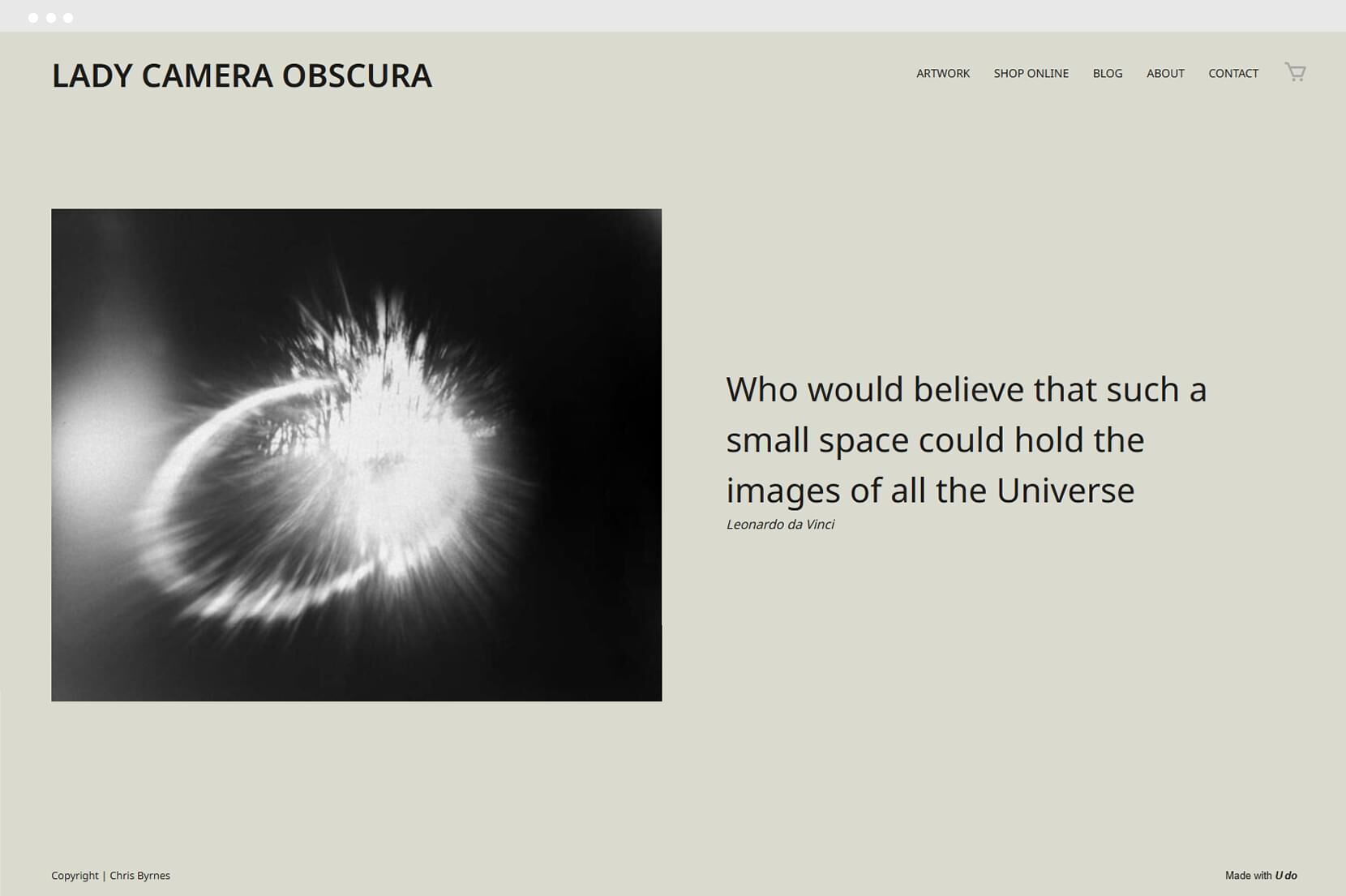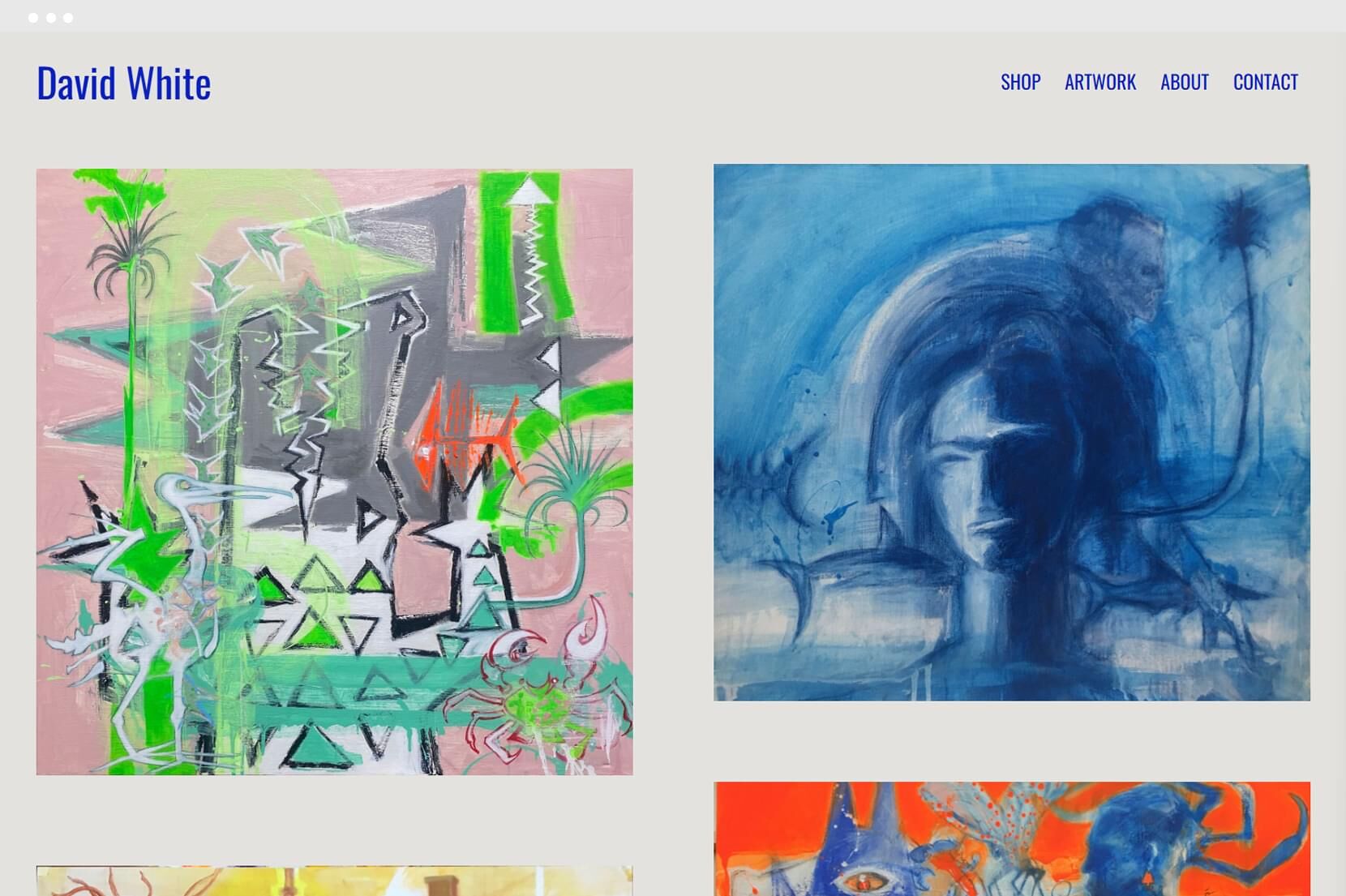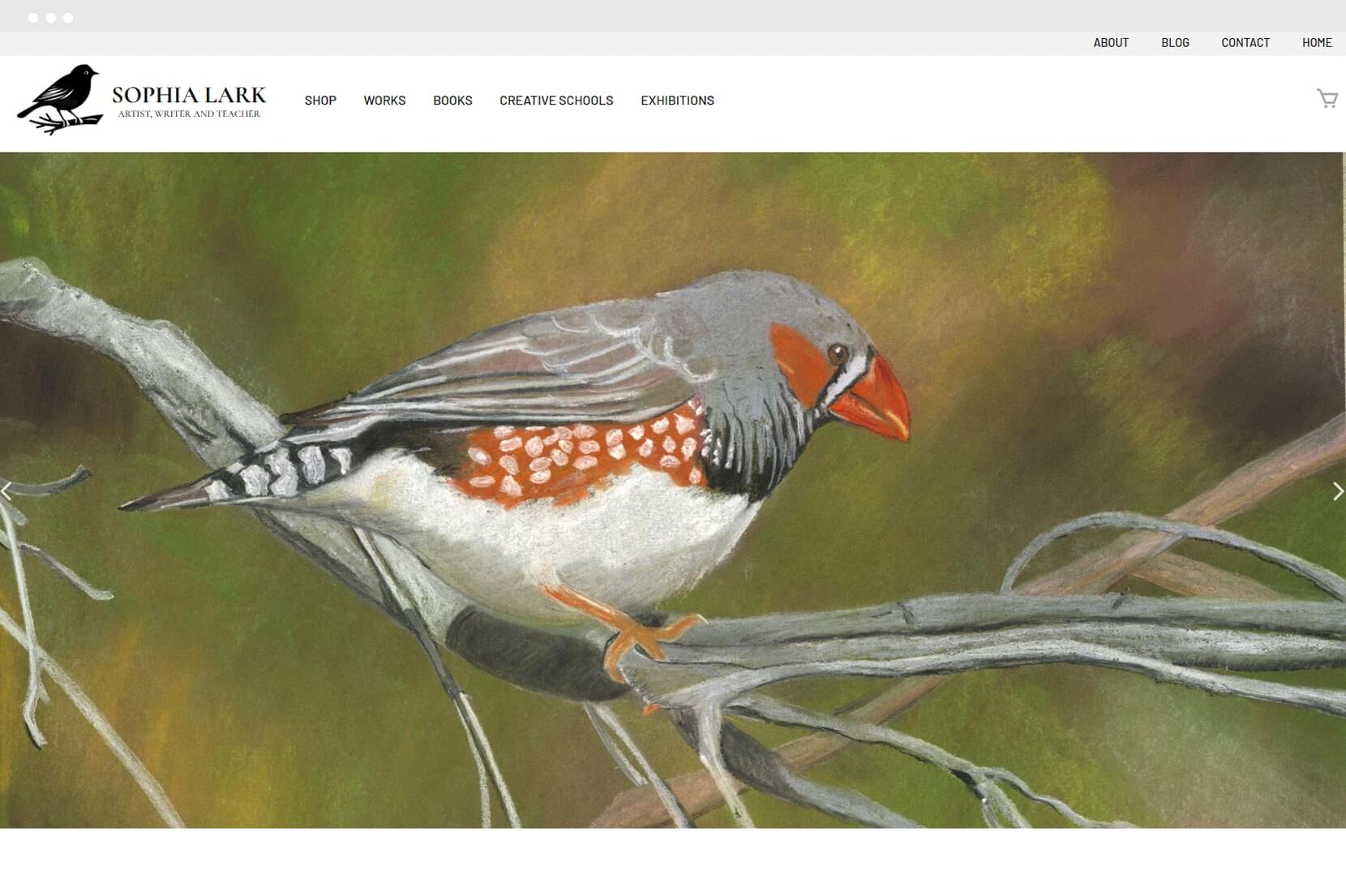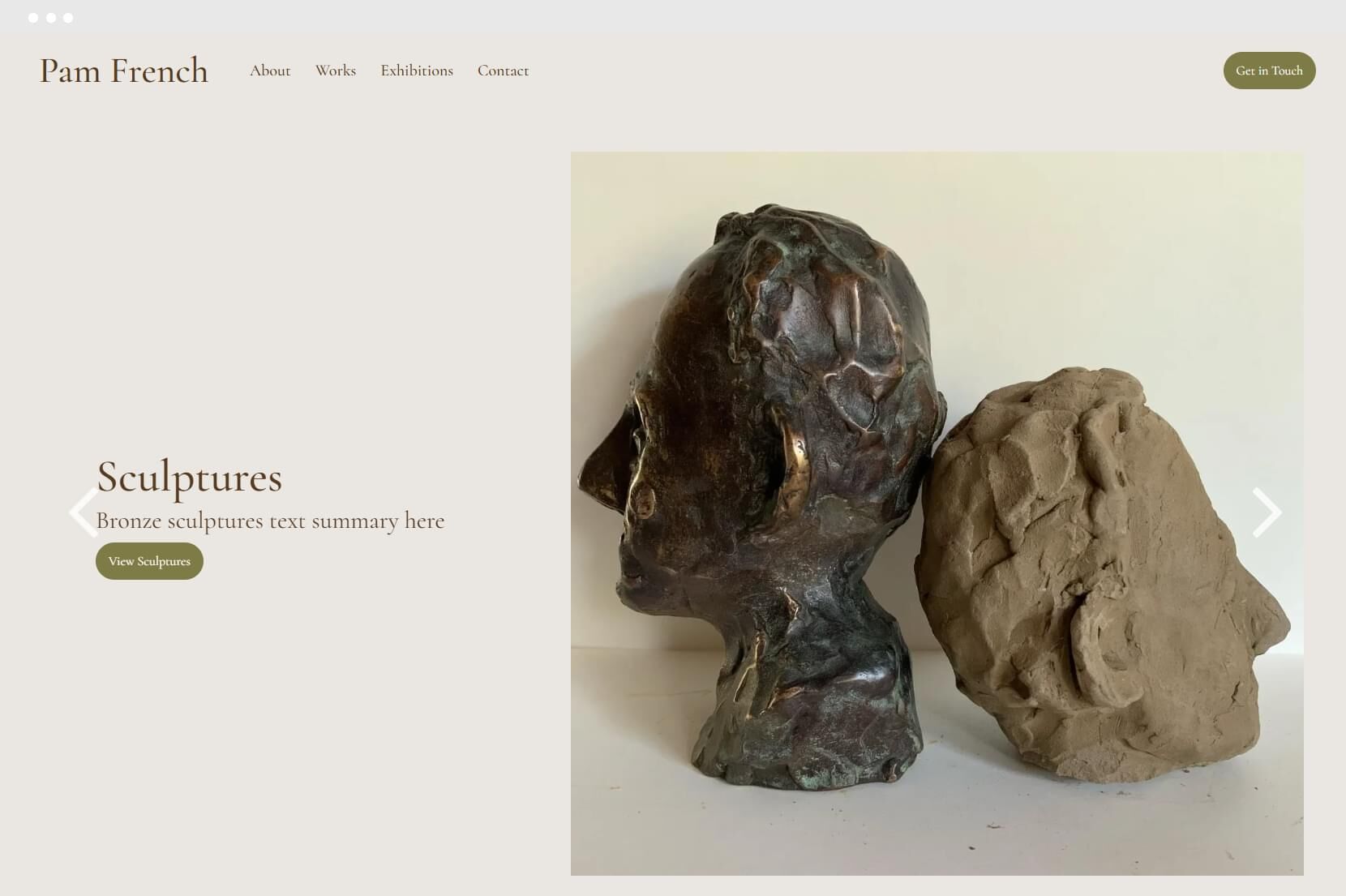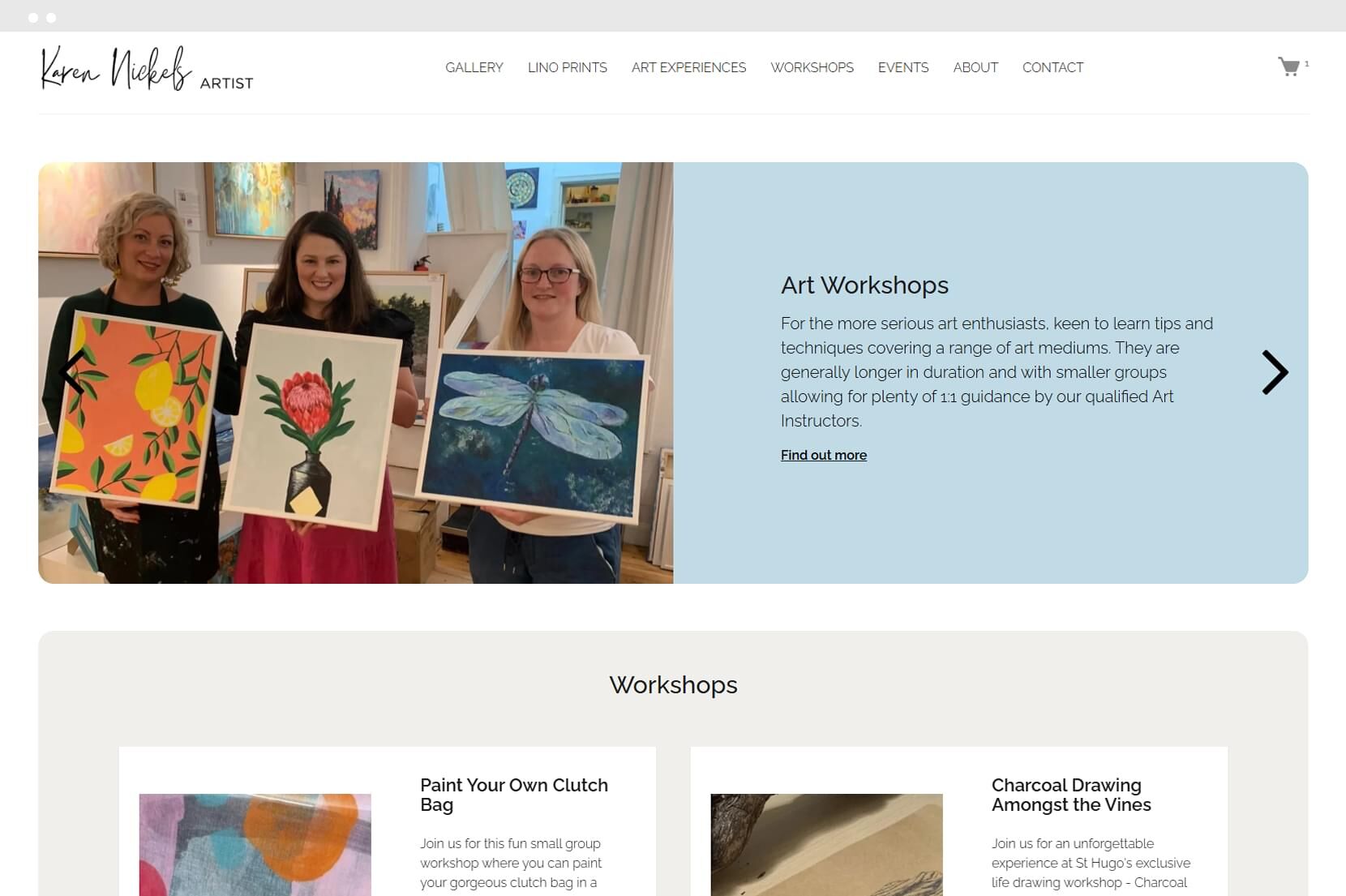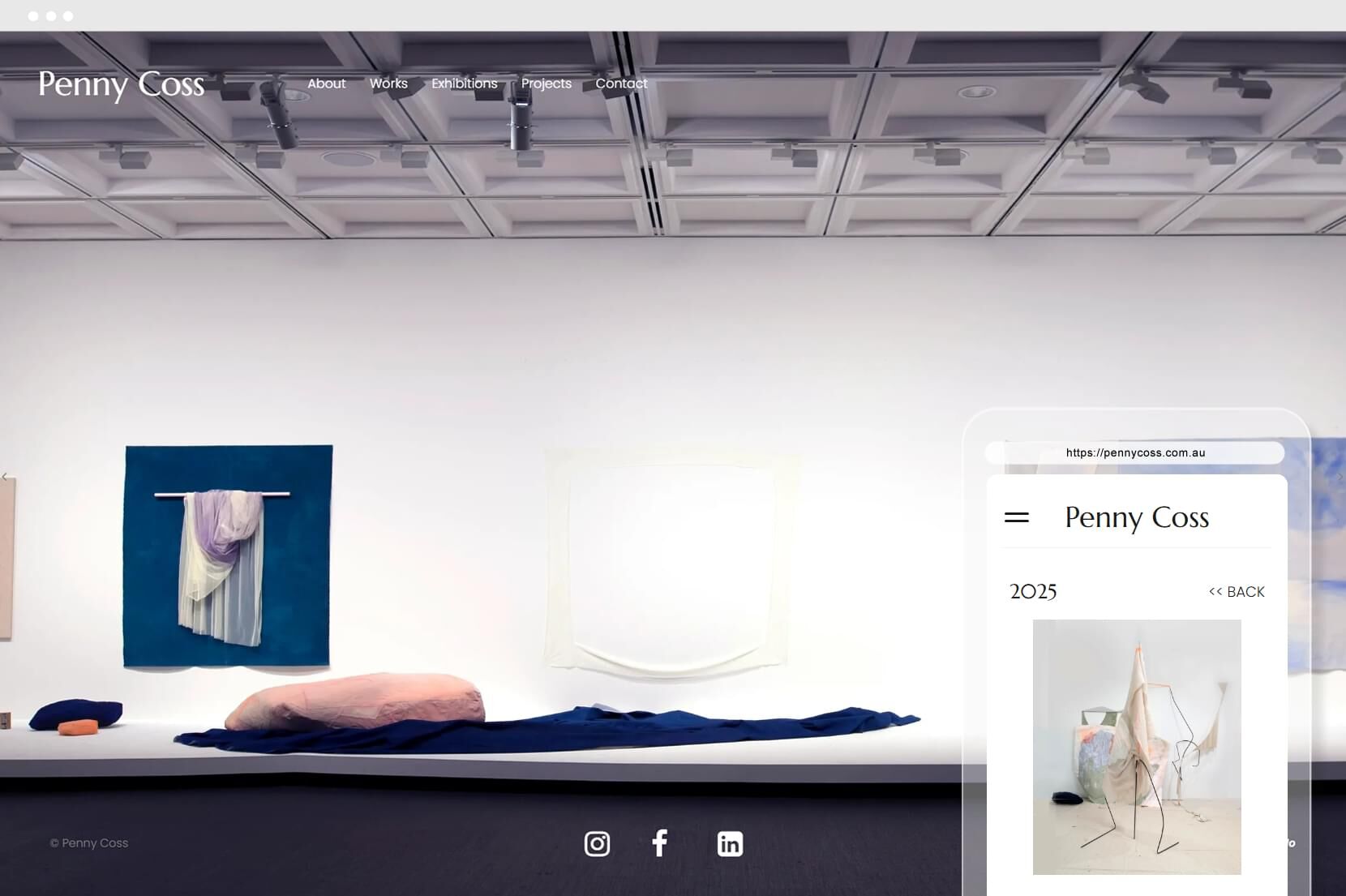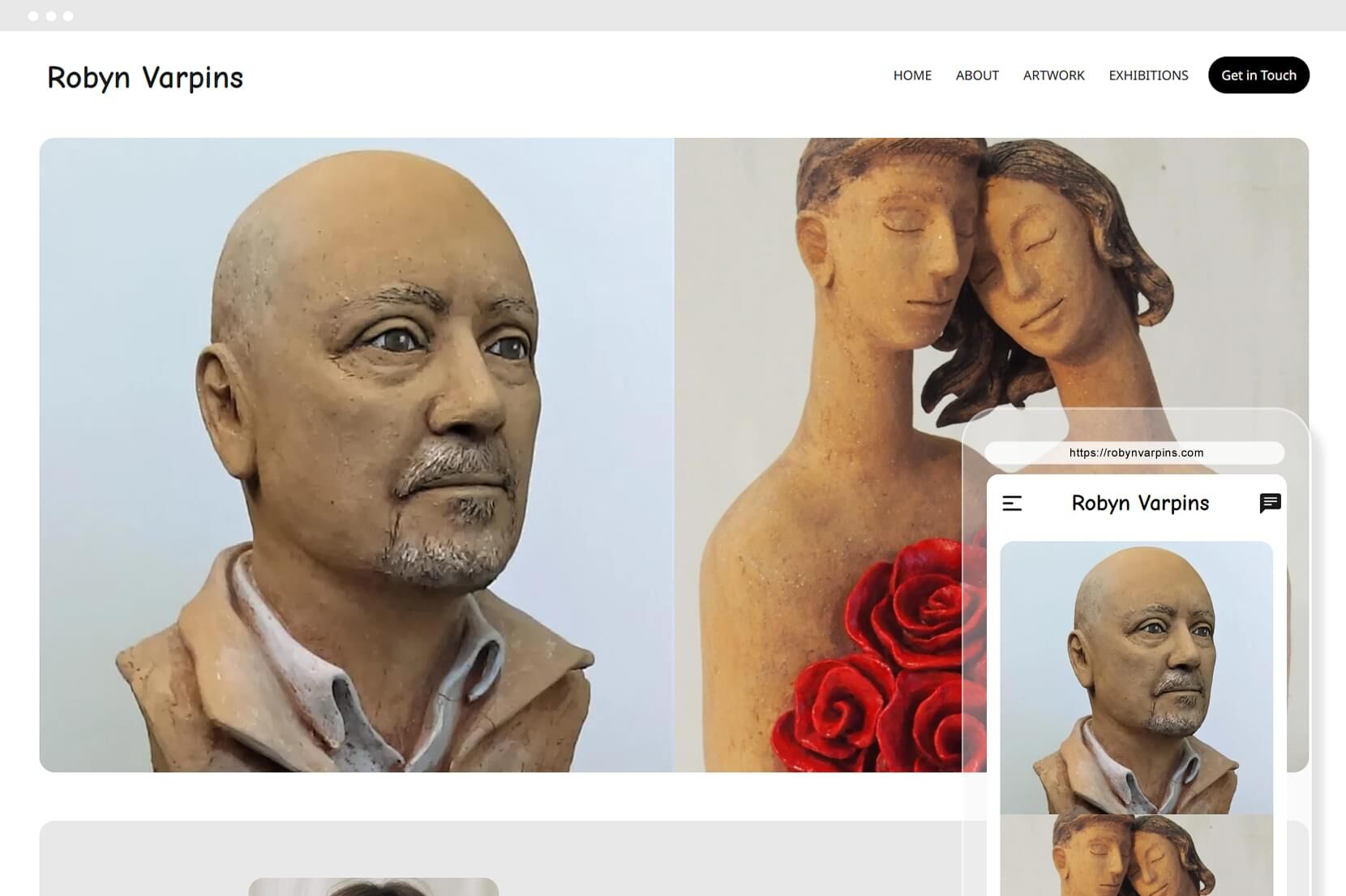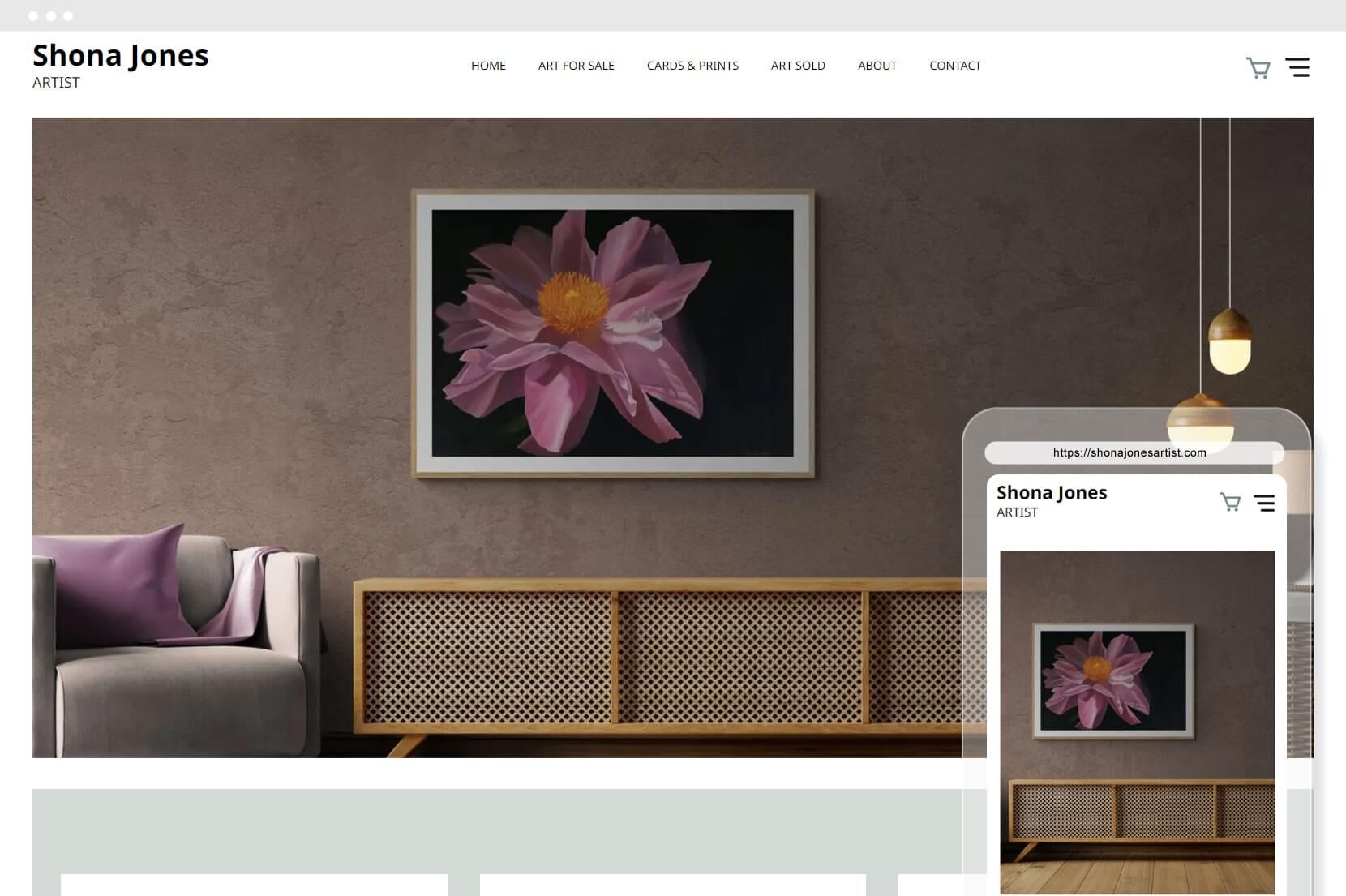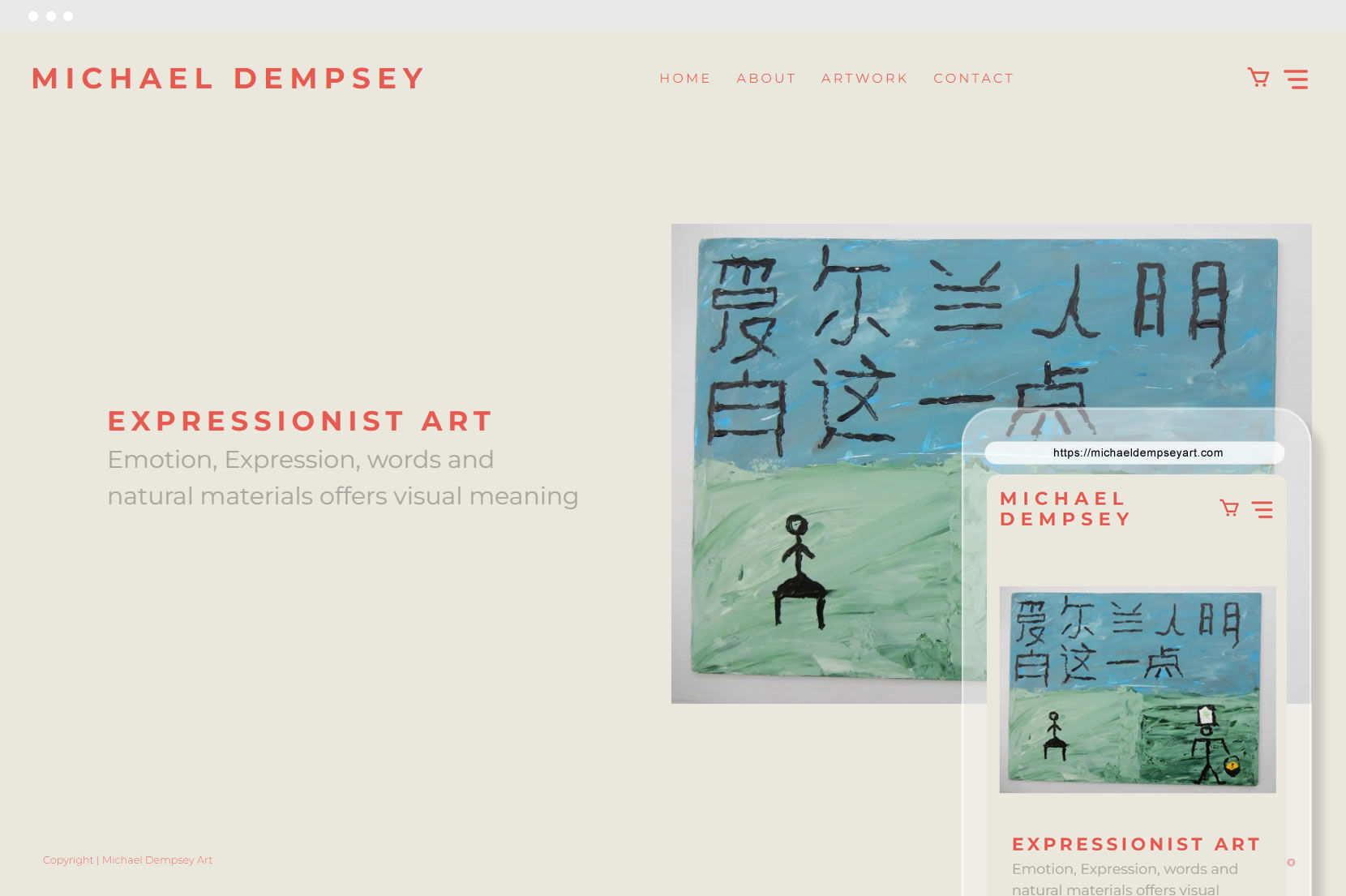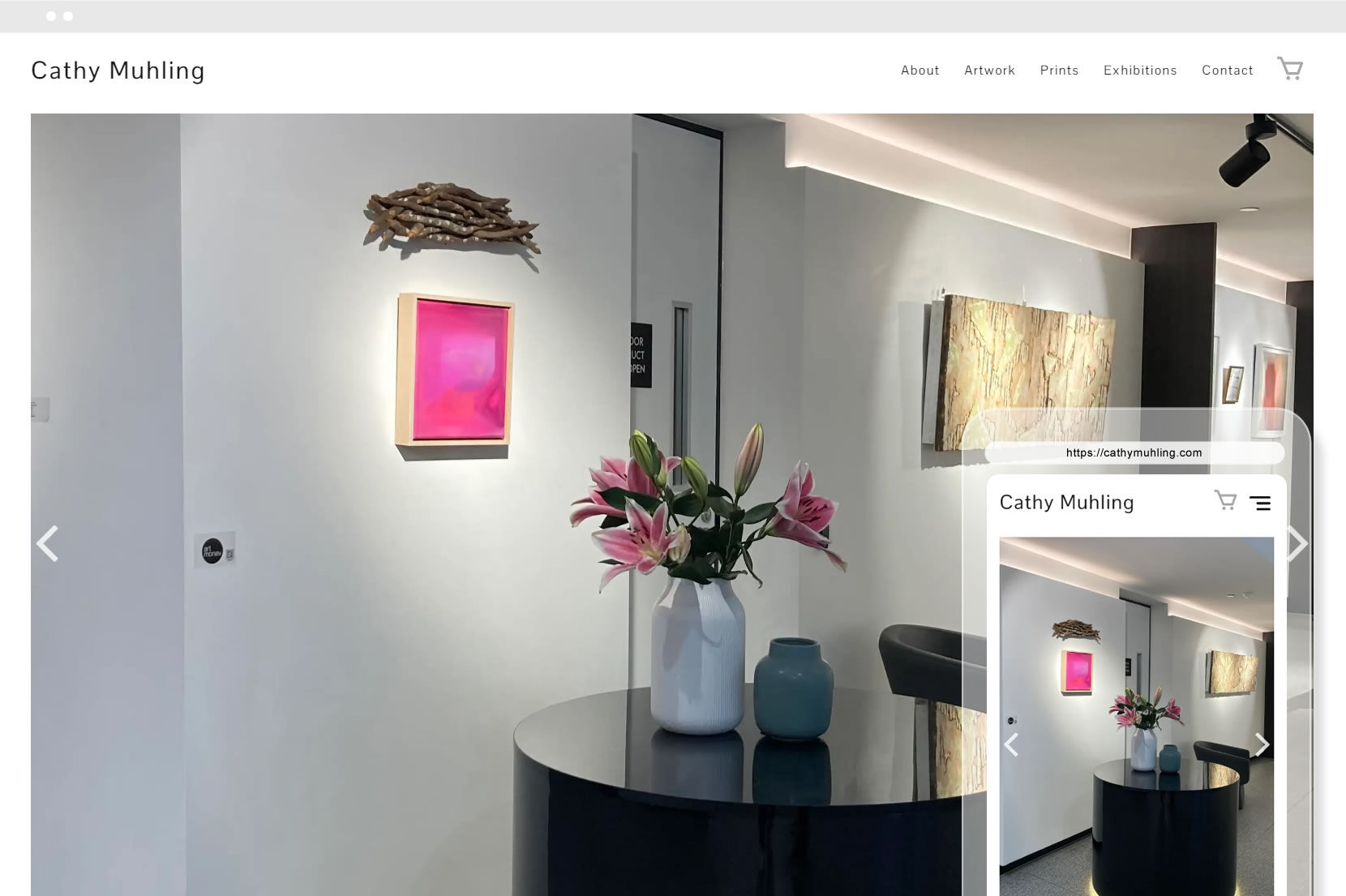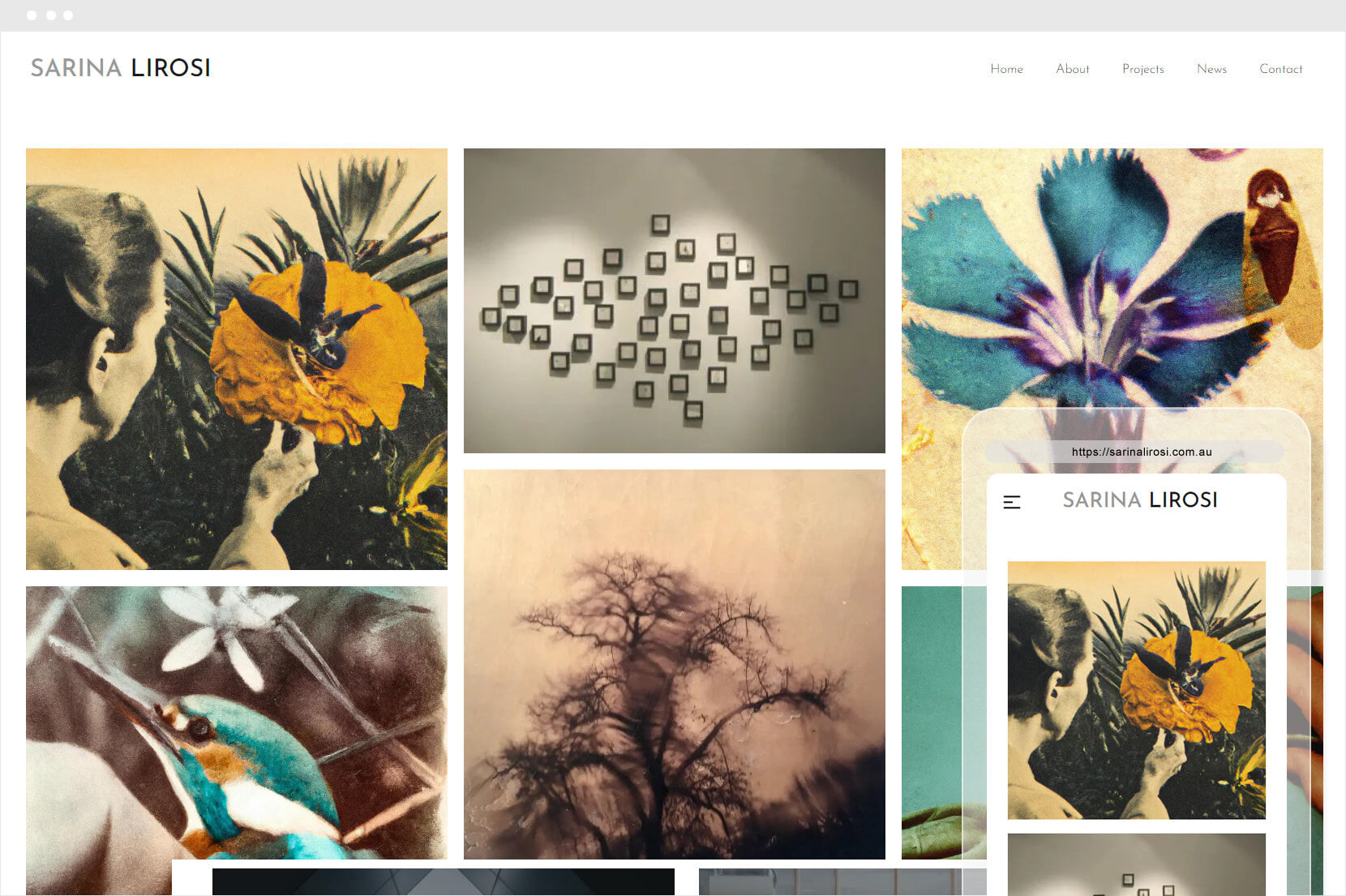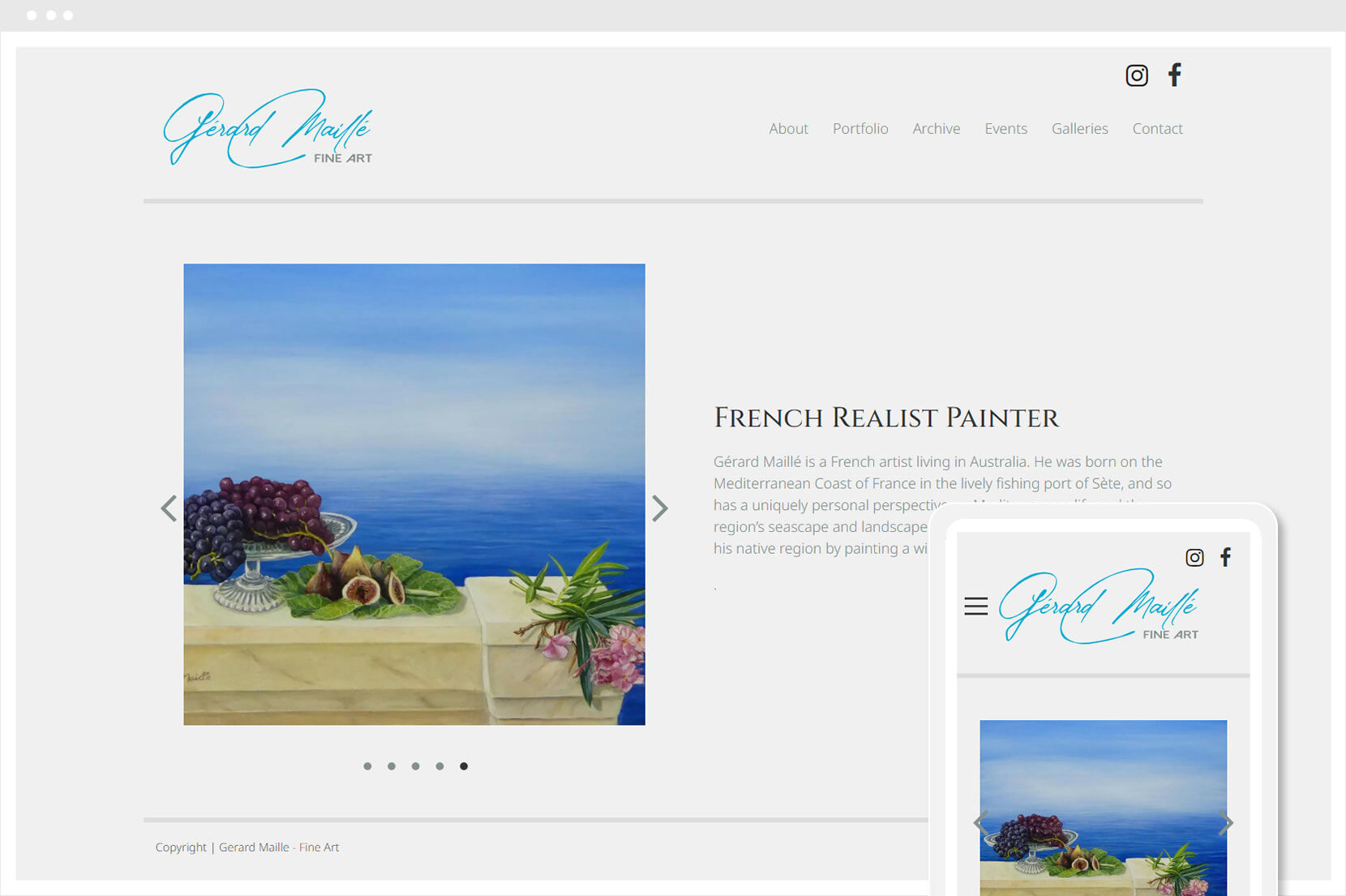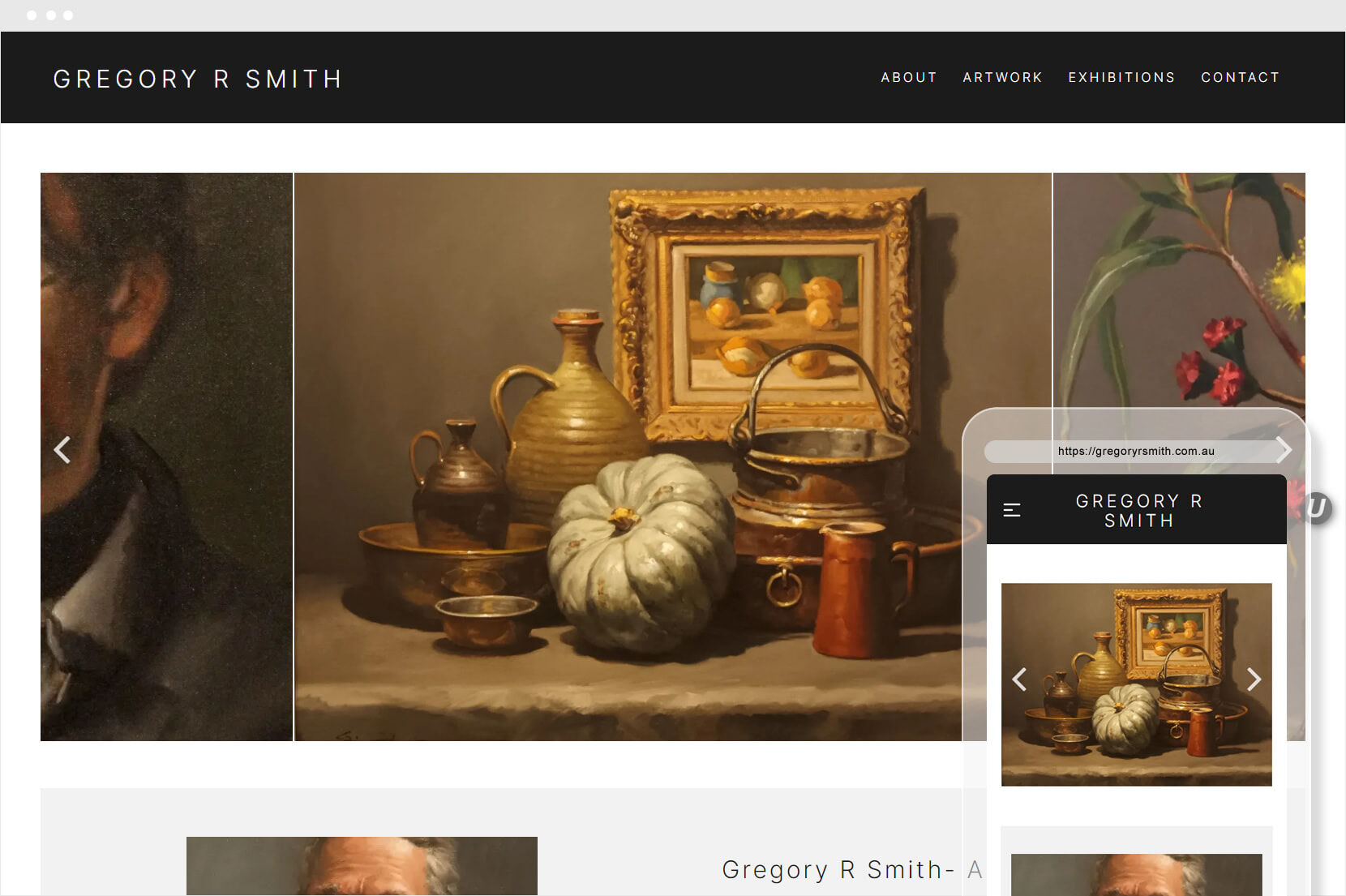
Why Every Artist Needs a Portfolio Website
(And How to Make Yours Shine)
Artist Portfolio Websites
Let’s be honest: the days of lugging a physical folio to every gallery, café or festival are well and truly over. These days, your art deserves to be seen anytime, anywhere — and that means one thing: an online artist portfolio website.
Whether you're a painter, sculptor, photographer, ceramicist, or mixed-media magician, having a website isn’t just a nice-to-have — it’s your digital studio, business card, and gallery, all rolled into one.
Here’s why it matters, what makes a good one, and how other artists are nailing it with U do’s dedicated art websites.
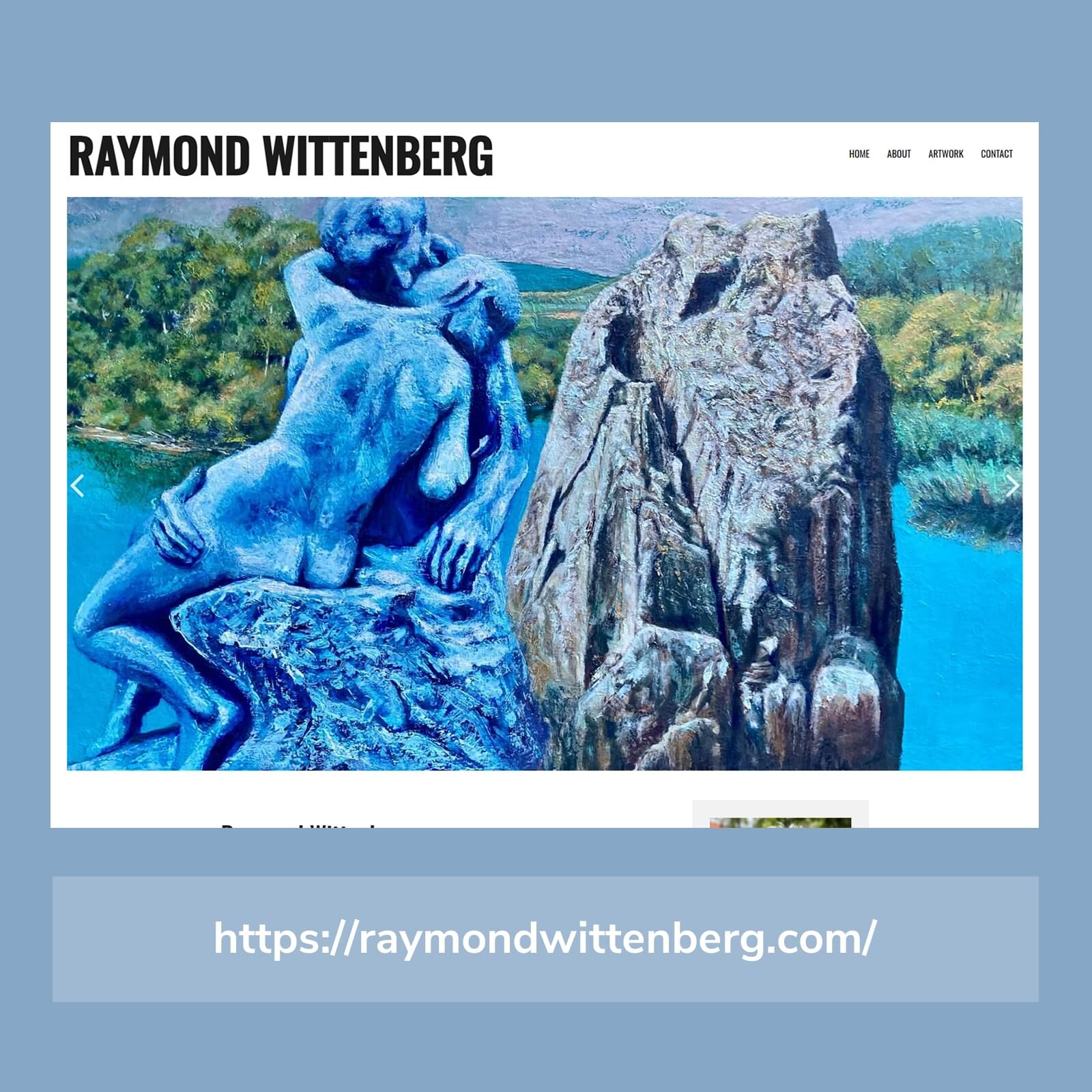
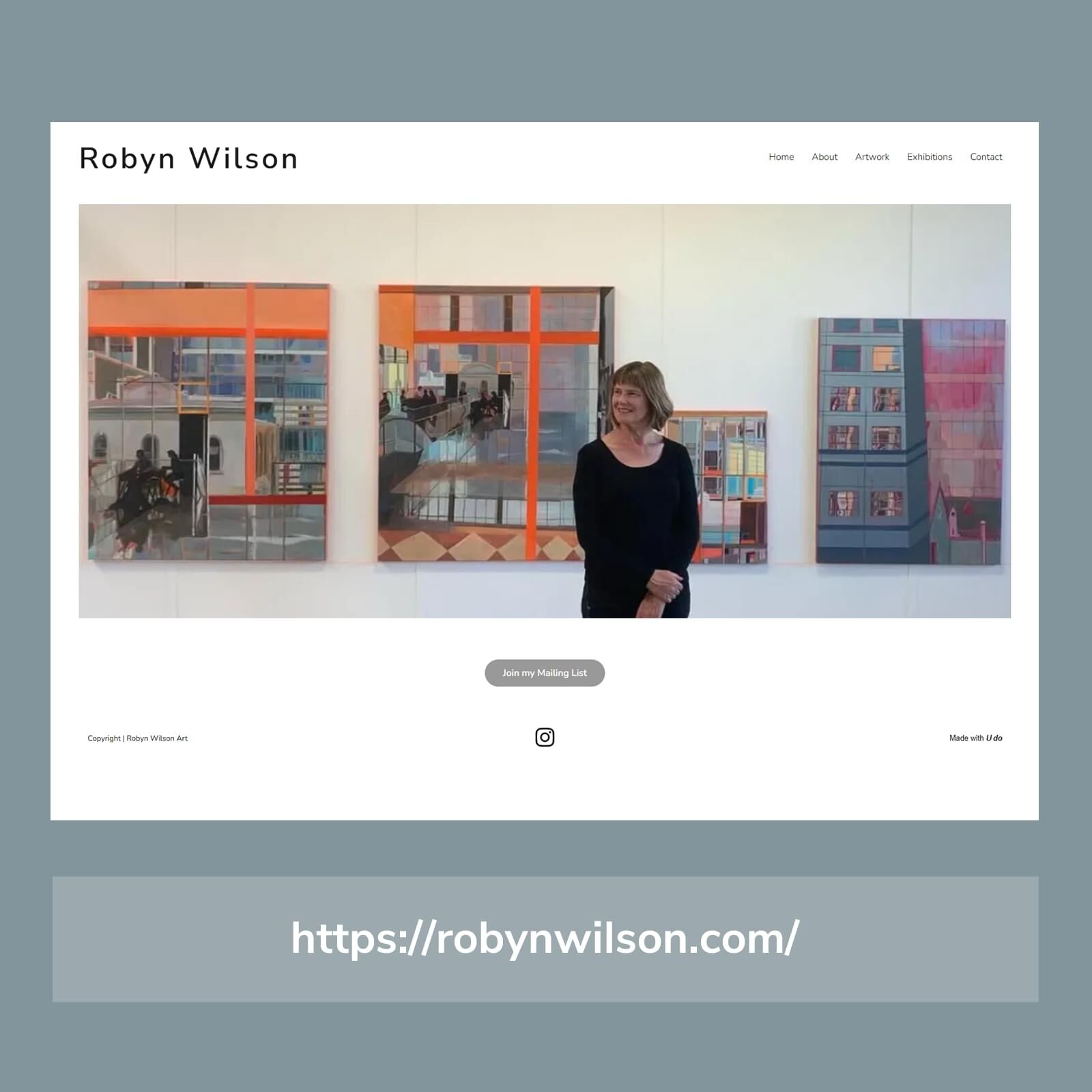
Why You (Yes, You!) Need an Artist Website
You're Google-able!
When someone Googles your name, what shows up? If it’s a Facebook post from 2017… perhaps nothing...we need to fix that. A website helps you control your online presence and lets curators, buyers, and fans find your art, not your holiday snaps.It shows you're professional.
Having your own site tells the world: “I take my art seriously.” It's your chance to showcase your story, your style, and your artistic evolution — without relying on social media algorithms to play nice.You’re open 24/7.
Unlike exhibitions with closing hours (and wine limits), your website is always on. People can browse, buy, or get in touch at any time — even while you’re elbow-deep in paint.
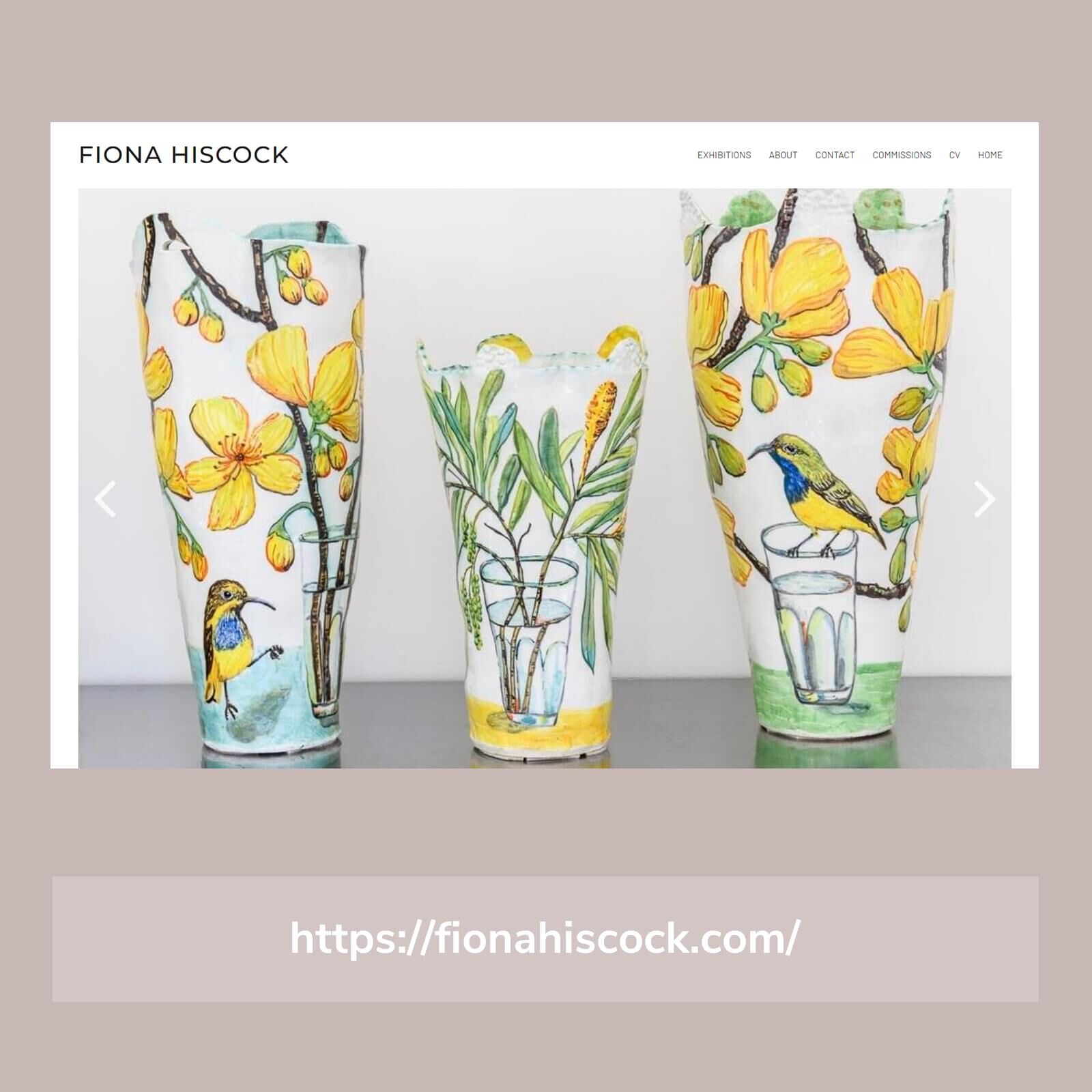
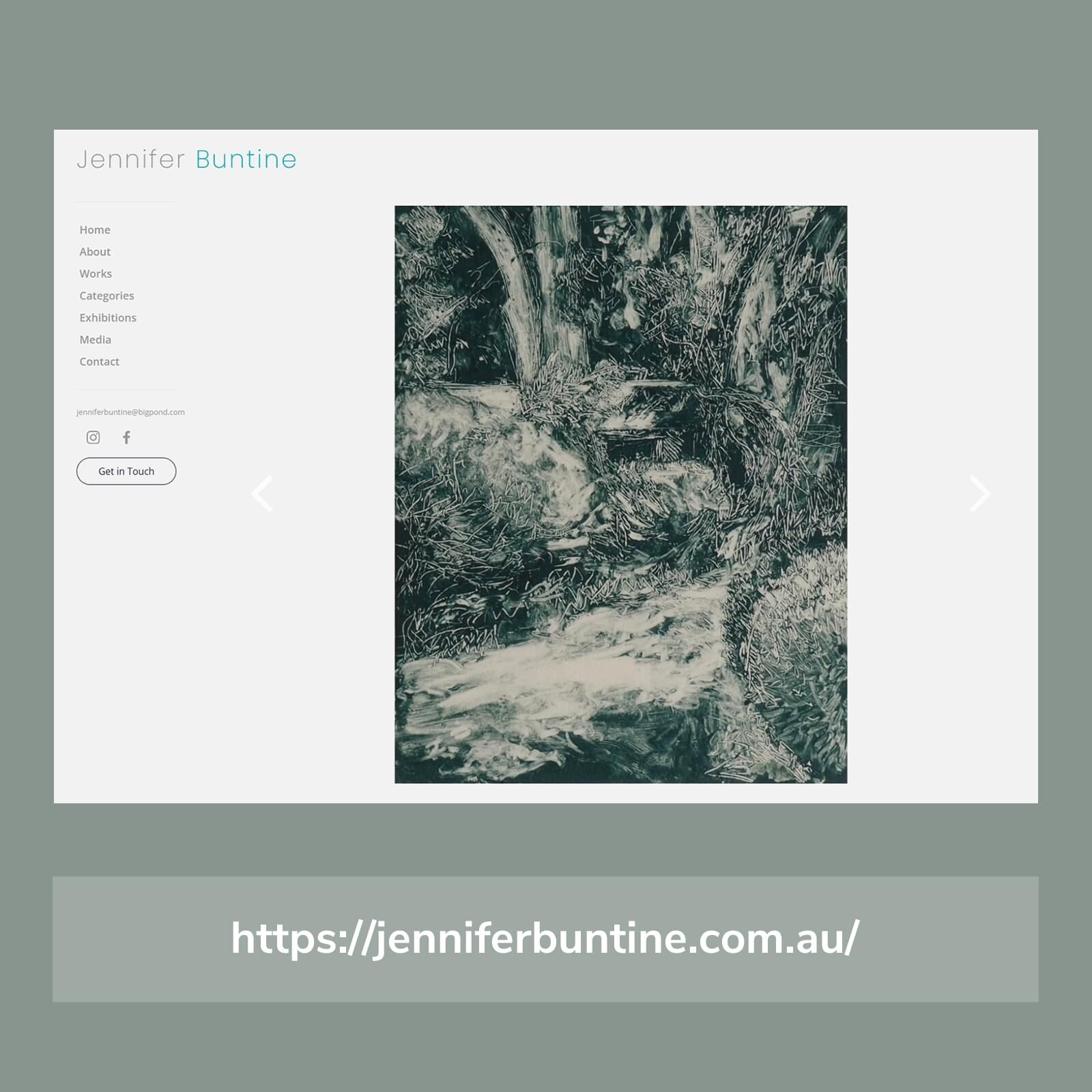
What Makes a Great Artist Portfolio Website?
1. A Clean, Gallery-Like Layout
Let your art do the talking. Keep the design simple, let images breathe, and don’t clutter the space with too much text.

Example: Raymond Wittenberg – Serene colours, clean layout, and a clear view of his works. His paintings take centre stage, and navigating the site feels like strolling through a calm, curated exhibition.
2. Your Story (a.k.a. your ‘About’ page)
Collectors and curators want to know the artist behind the brush. Share what drives your practice, your influences, your process. Be real — even a touch quirky!
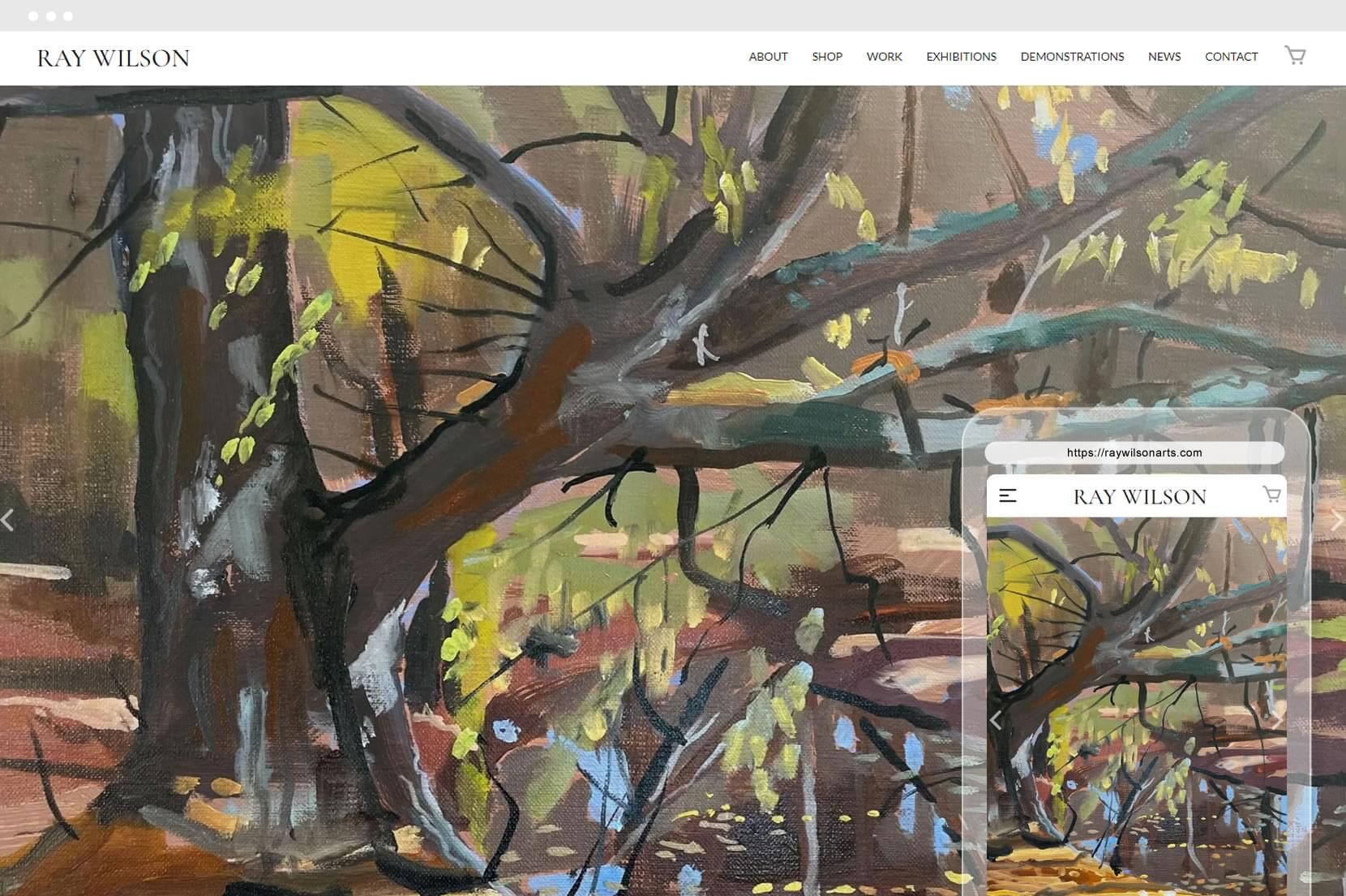
Example: Ray Wilson does this beautifully. His homepage offers a glimpse into his vibrant world, with engaging copy and colourful visuals that match his unique style.
3. Artwork Details
Give your work context! Add titles, mediums, sizes, and optional pricing. Bonus points if people can enquire or buy directly.
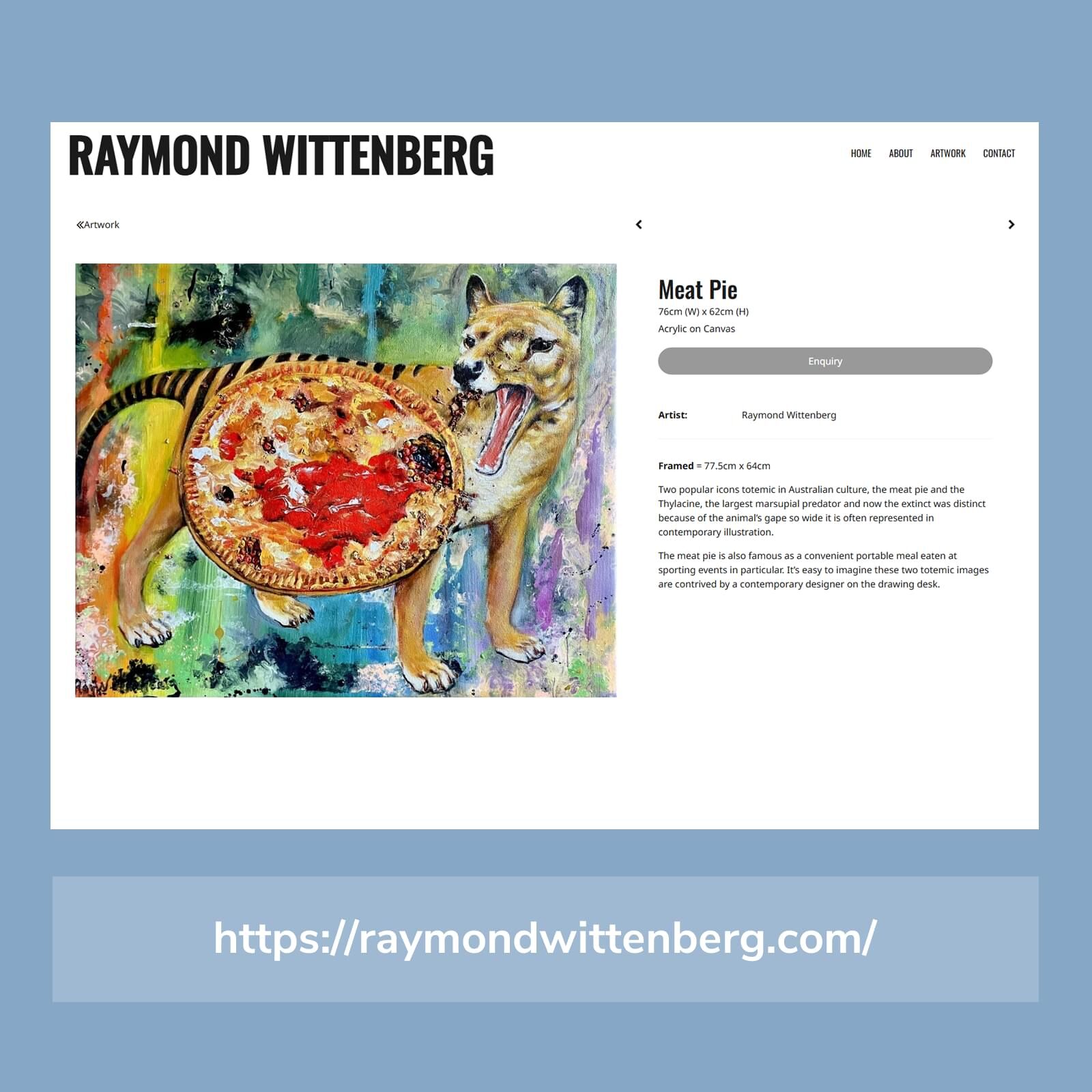
Example: Raymond Wittenberg does this beautifully. He includes the artwork name, dimensions, and a story behind the work to help engage visitors, plus they can easily enquire about the painting at a click on a button.
4. Easy Contact + Social Links
Don’t make people hunt for your email. Make it simple to get in touch or follow you on socials — you never know who’s watching!
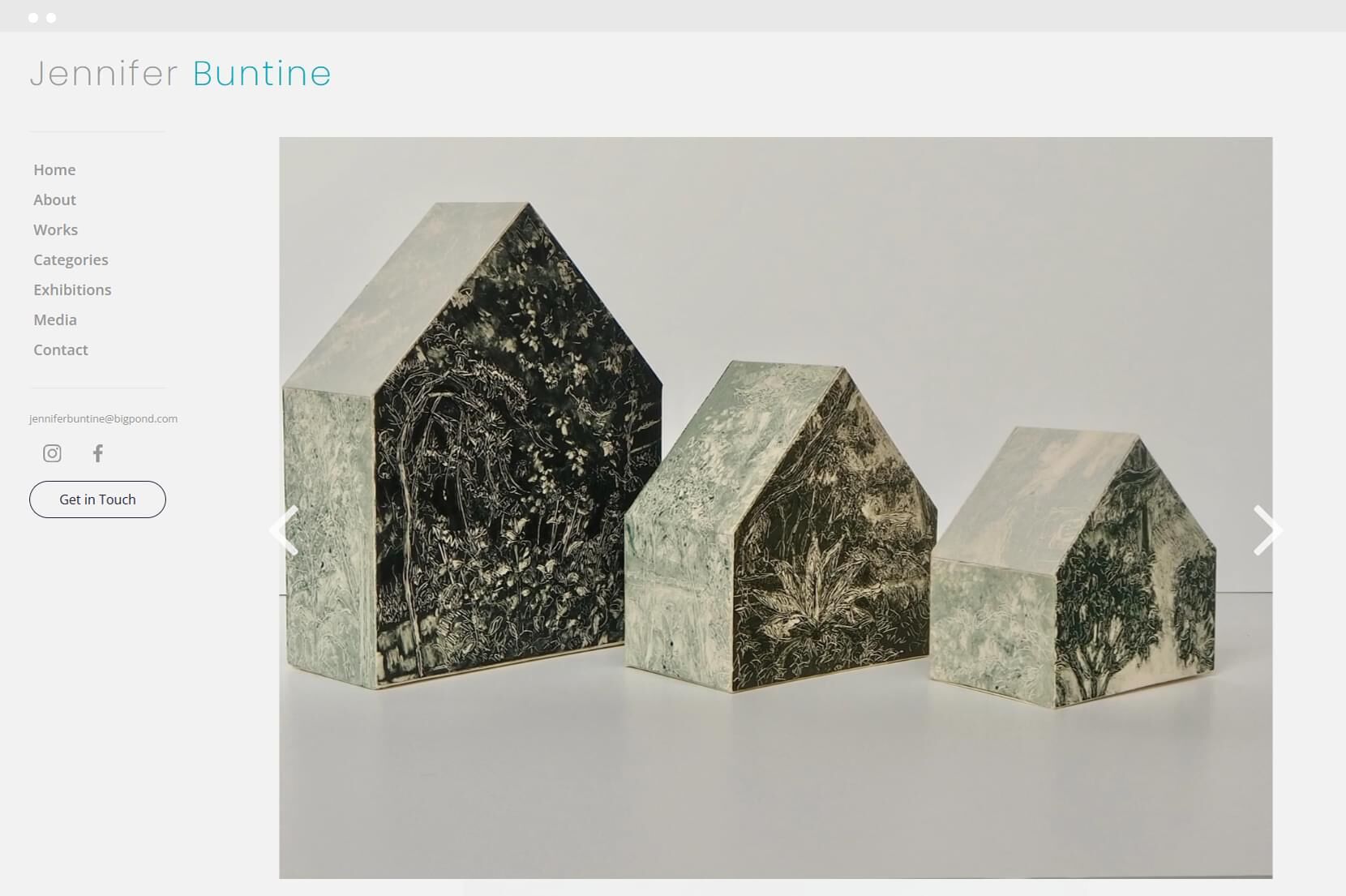
Example: Jennifer Buntine makes it easy to contact her by either clicking on the "Get in Touch" button or visit her Iinstagram or Facebook page.
5. Mobile Friendly (Yes, This Matters!)
Over 70% of web traffic is on phones. Your site needs to look great on a laptop, tablet, and phone — no pinching or zooming required.
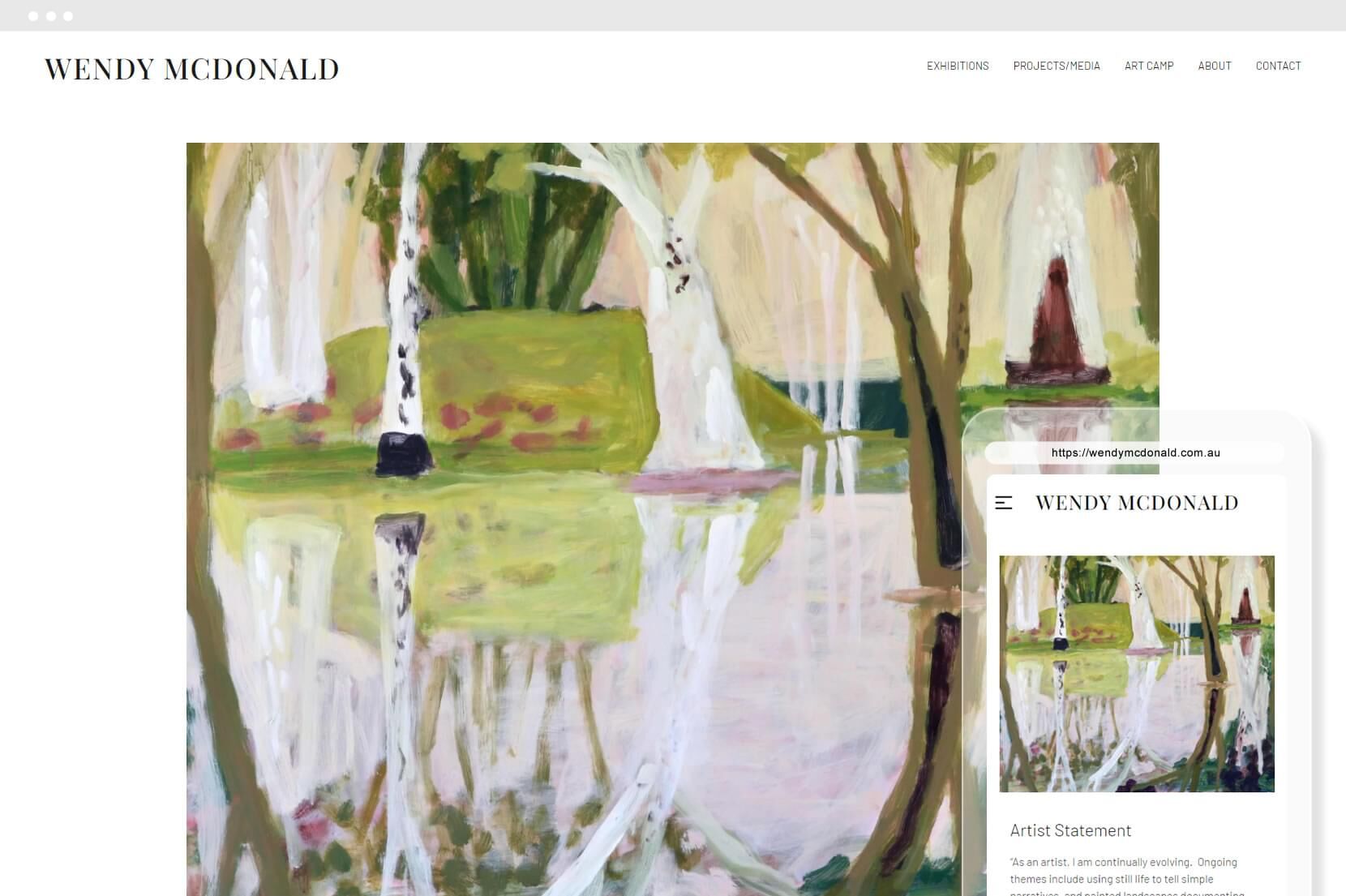
Example: Wendy McDonald site is easily to view on all devices. She can also update and add new artworks using her mobile tablet, laptop or desk top computer.
The Juicy Benefits of an Artist Website
✅ Sell directly from your site — no gallery commissions, no middlemen.
✅ Grow your audience with email newsletters and blog updates.
✅ Apply for grants and shows with a professional folio link.
✅ Catalogue your works in one place — for your records and your fans.
✅ Promote exhibitions or workshops with built-in event features.
And if you’re thinking, “But I’m not techy…” — breathe easy. U do makes it simple. Their dedicated art websites are designed specifically for artists, with built-in tools like artwork uploaders, event listings, and even online shops (hello passive income 👀).
Real Artists. Real Websites. Real Easy.
Over 400 Artists around Australia (and beyond!) are already using U do to showcase their portfolios — and loving the freedom, support, and simplicity it brings.
So, if your art is still living quietly on your studio walls or buried in an Instagram grid, now’s the time to give it the online gallery it deserves.
Real Artists. Real Websites. Real Easy.
Check out U do’s Artist Website Builder — made with love (and actual artists) to help you shine online.
P.S. You don’t need to be famous to be found online. You just need to start. ✨
